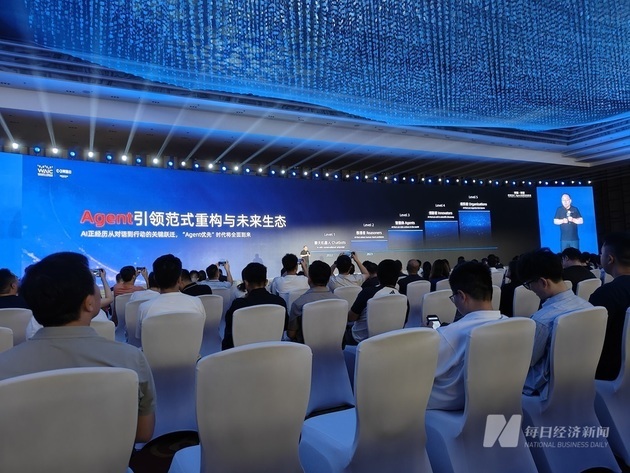AI Agents are rapidly emerging as the most promising and practical format of artificial intelligence, playing an increasingly pivotal role in driving industrial upgrades.
At the 2025 World Artificial Intelligence Conference (WAIC 2025), Alibaba showcased three newly open-sourced large language models (LLMs), each of which has claimed top positions globally in its respective category—foundational models, programming models, and reasoning models. Notably, Qwen3-Coder, the AI programming model, has achieved major breakthroughs in code generation, language understanding, and Agent orchestration capabilities.

Photo/Zhang Yun (NBD)
On July 27, Ye Jieping, Vice President of Alibaba Cloud and Head of the Big Data and Intelligent Computing Lab, spoke at the Alibaba Cloud Agent Ecosystem Forum. He emphasized that Alibaba's Qwen family of models has now achieved full-scale and full-modality open-sourcing, effectively breaking down the long-standing technical divide between open and closed models.
The AI industry as undergoing a historical transformation, shifting from incremental innovation to exponential leapfrogging. Ye recalled, "In 2019, we were still discussing small-scale breakthroughs in language models," he said. "But by 2025, foundation models are iterating weekly." Ye noted that over the next three years, Alibaba plans to invest 380 billion yuan (approximately $52 billion) into cloud infrastructure and AI hardware, more than the total of the past decade combined.
Following the release of its three major models, API traffic for Qwen skyrocketed. Within just three days, the token count surpassed 100 billion, outpacing OpenAI's GPT, Google's Gemini, and Anthropic's Claude. Qwen even claimed the top three trending spots on OpenRouter, setting a new performance benchmark for Chinese-developed models.
As of now, the Qwen models have exceeded 400 million downloads across global model-sharing platforms, and over 140,000 derivative models have been created. In the Alibaba exhibition zone at WAIC, the company's end-to-end AI capabilities—from infrastructure to foundation models to applications—are on full display. Its AI platform "Bailian" has been designated a centerpiece of WAIC 2025, attracting over 200,000 developers who have built more than 700,000 AI Agents on the platform.
Ye stated that open-source development is fueling the rapid growth of the model ecosystem. With precise fine-tuning, AI's abilities in understanding, reasoning, and generation have advanced significantly. "AI is transitioning from dialogue to action," he said. "The Agent-First era is fully underway."
At the forum, Wang Hao, CTO of Zhaopin (a leading online recruitment platform), shared how AI Agents are being used for intelligent full-stack recruitment. Zhaopin is leveraging the Qwen open-source models to enhance internal productivity and product optimization, particularly in multi-turn dialogue, natural language processing (NLP), and domain-specific knowledge. In 2025, the company launched the AI-powered version of its recruitment platform, covering a range of tasks from job postings and resume recommendations to candidate communication and interview coordination.
Zhaopin told National Business Daily (NBD) that it is working openly with major domestic LLM developers—including Baidu, Alibaba, Zhipu, MiniMax, and DeepSeek—to explore applications of foundation models in the human resources sector and to tackle core efficiency bottlenecks in the hiring process.
As AI continues to reshape talent demands, Zhaopin noted a year-on-year increase in job openings for roles such as data annotators, algorithm engineers, and robotics engineers. While digital skills have become foundational, the importance of soft skills is also rising. Future organizational structures will likely become more diverse, with AI-powered employees emerging and requiring companies to rethink workforce management paradigms.
Disclaimer: The content and data presented in this article are for informational purposes only and do not constitute investment advice. Please verify all information before making financial decisions. Use at your own risk.


 川公网安备 51019002001991号
川公网安备 51019002001991号





